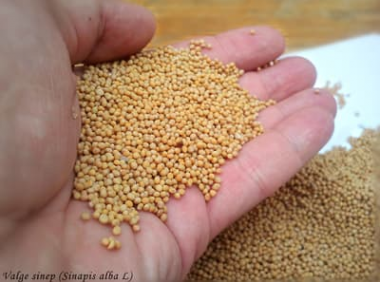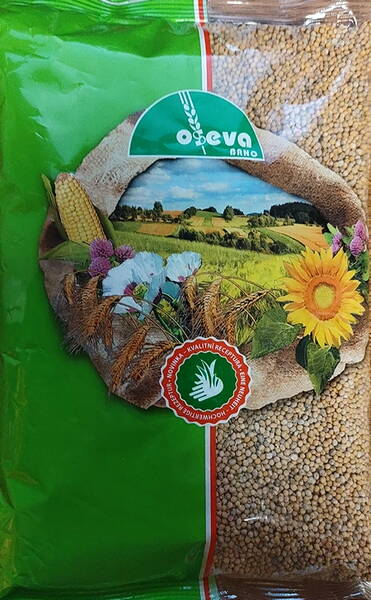Your shopping cart is empty!
White Mustard "Merkantil"
White mustard (Sinapis alba) is an annual oil-bearing plant of the Cruciferous family, has the ability to release sparingly soluble phosphates.
It can grow in any soil with a pH ranging from very acidic to alkaline. Seeds germinate at +3°C. Seedlings withstand short-term frosts down to -5°C.
Mustard sprouts quickly and grows quickly. The green mass is mowed when the leaves of the plant are fresh, juicy, and better before mass flowering, because. when harvesting at a later date, the leaves will begin to die off and the organic mass will decrease, and the ripened seeds will clog the garden bed. On average, the period from sowing to the incorporation of mustard into the soil is 55-70 days (8-10 weeks). It is better to plant it in the soil or dig a little, and by autumn everything will already rot.
The seeding rate is 2.5-4.0 g/m2. The depth of embedding into the soil is 2-3 cm (sowing is lightly burying with a rake into the soil). The next crop is planted no earlier than 3-4 weeks after the incorporation of the green mass.
The phytosanitary effect of mustard is also important - after planting, the incidence of plants with such common diseases as: late blight, rhizoctoniosis, scab of tubers, fusarium rot, incl. and in potatoes.
Mustard crops reduce the number of wireworms in the soil, it is also recommended to plough white mustard in late autumn, as a result of a violation of the wintering of the wireworm, its death occurs. To increase the effectiveness of the fight against wireworm, the seeding rate of mustard is increased to 5.0 g/m2.
1.0 g = 145-190 seeds.
It can grow in any soil with a pH ranging from very acidic to alkaline. Seeds germinate at +3°C. Seedlings withstand short-term frosts down to -5°C.
Mustard sprouts quickly and grows quickly. The green mass is mowed when the leaves of the plant are fresh, juicy, and better before mass flowering, because. when harvesting at a later date, the leaves will begin to die off and the organic mass will decrease, and the ripened seeds will clog the garden bed. On average, the period from sowing to the incorporation of mustard into the soil is 55-70 days (8-10 weeks). It is better to plant it in the soil or dig a little, and by autumn everything will already rot.
The seeding rate is 2.5-4.0 g/m2. The depth of embedding into the soil is 2-3 cm (sowing is lightly burying with a rake into the soil). The next crop is planted no earlier than 3-4 weeks after the incorporation of the green mass.
The phytosanitary effect of mustard is also important - after planting, the incidence of plants with such common diseases as: late blight, rhizoctoniosis, scab of tubers, fusarium rot, incl. and in potatoes.
Mustard crops reduce the number of wireworms in the soil, it is also recommended to plough white mustard in late autumn, as a result of a violation of the wintering of the wireworm, its death occurs. To increase the effectiveness of the fight against wireworm, the seeding rate of mustard is increased to 5.0 g/m2.
1.0 g = 145-190 seeds.

White mustard. Bot. syn.: Brassica hirta Moench, Sinapis alba L. subsp. alba.











